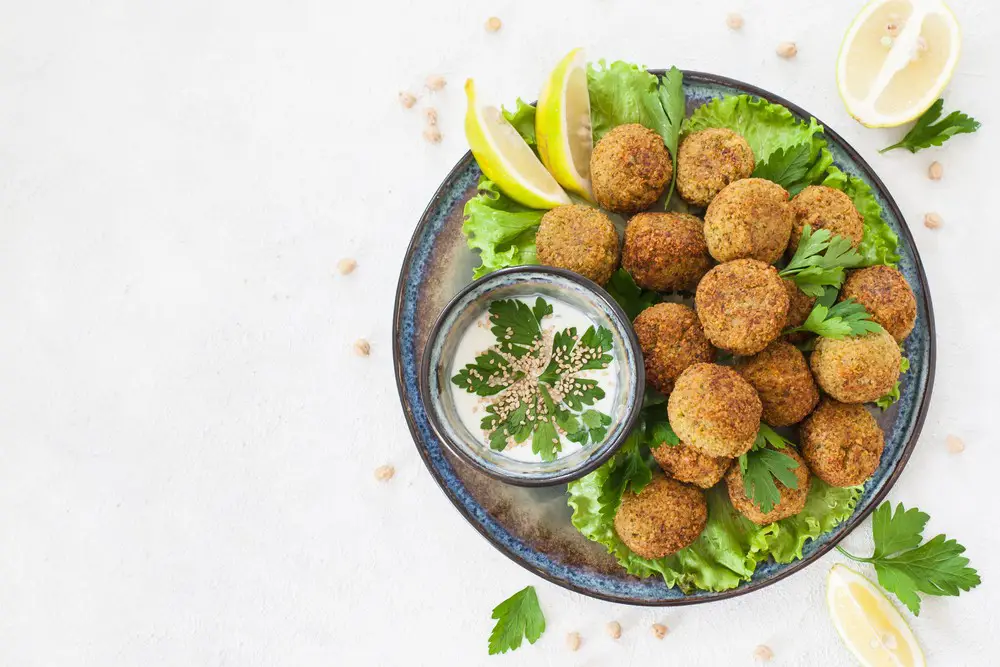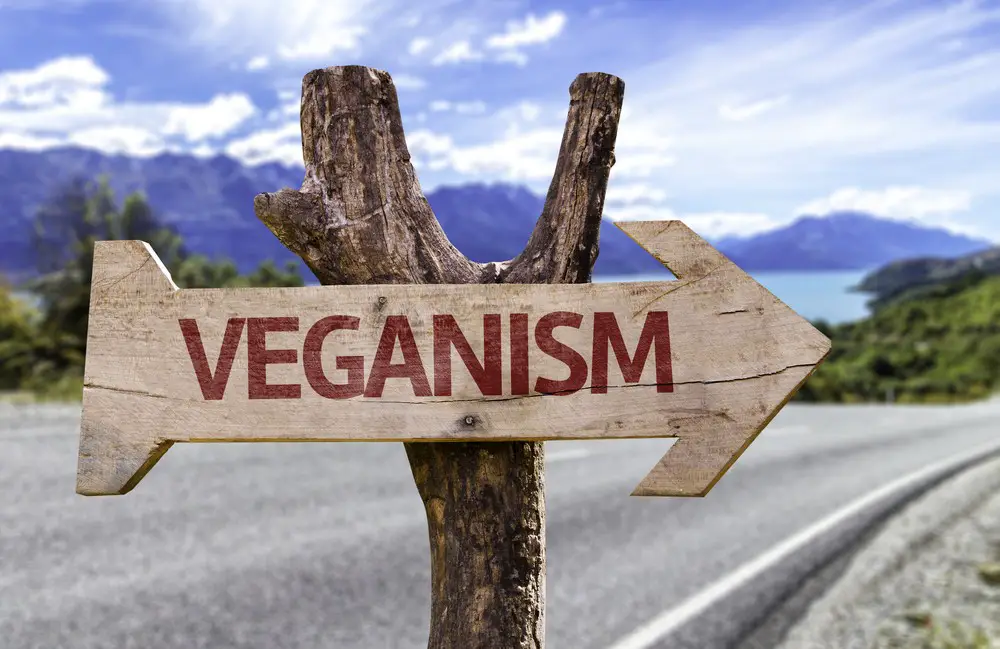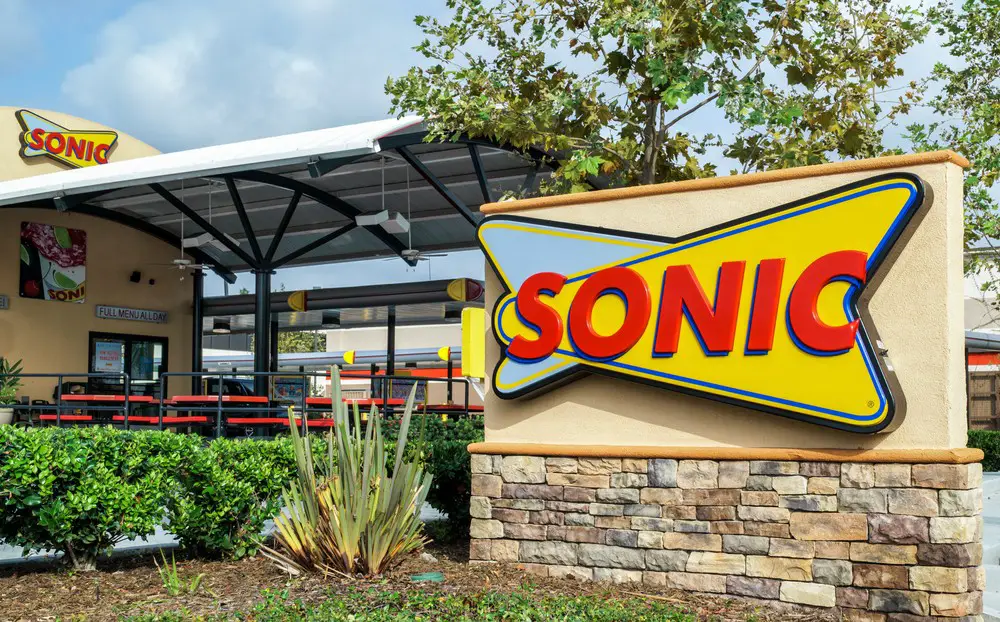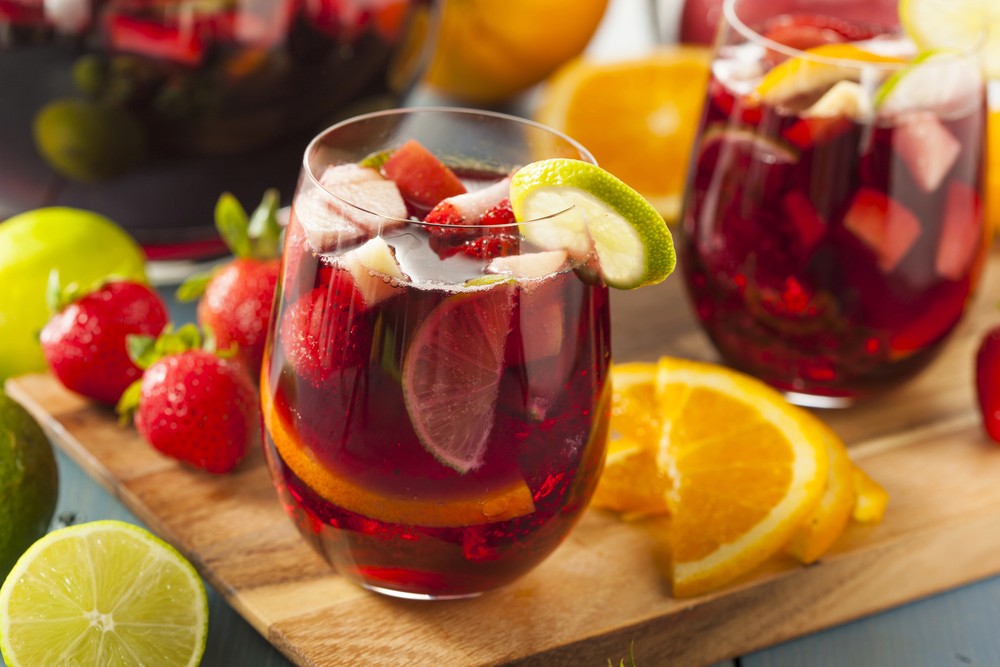Falafel, the flavorful Middle Eastern fritter made from ground chickpeas, herbs, and spices, has become widely popular across the globe. With its delicious taste and golden-brown appearance, falafel has found its way into various cuisines and is often enjoyed as a street food or a healthy snack.
As more people adopt plant-based diets for health, environmental, or compassionate reasons, the question arises: Is falafel vegan? Generally, traditional falafel recipes craft these delicious morsels with entirely plant-based ingredients, making them suitable to incorporate into a vegan diet. However, variations in preparation methods and additional ingredients may impact their vegan status.
When ordering or preparing falafel, one must be aware of non-vegan components, such as animal fat used for frying or garnishes containing dairy. By inspecting the ingredients and preparation methods, those following a vegan lifestyle can enjoy falafel without compromising their dietary choices.
Is Falafel Vegan
Basic Ingredients
Falafel is a popular Middle Eastern dish made from ground chickpeas or fava beans mixed with various herbs, spices, and other ingredients. The basic ingredients in a falafel recipe are:
- Chickpeas or fava beans
- Onion
- Garlic
- Parsley
- Cilantro
- Cumin
- Salt
These ingredients are vegan, as they are all plant-based. The mixture is typically shaped into deep-fried balls or patties, making falafel a vegan-friendly option.
Common Additives
In some cases, falafel recipes may include additional ingredients or additives. It’s essential to be aware of these when determining if a falafel dish is vegan. Some common additives include:
- Breadcrumbs: Some recipes use breadcrumbs for binding purposes. Most breadcrumbs are vegan. However, checking whether the breadcrumbs contain animal-derived ingredients like dairy or eggs is crucial.
- Oil: The oil used for frying falafel is generally vegan. Commonly used oils include vegetables, sunflower, or olive oil.
- Binding Agents: Flaxseed or chia seed meal with water can serve as vegan binding agents. Eggs are sometimes used, making the falafel non-vegan. Always verify the binding agent used in the recipe.
- Sauces: Falafel is often served with various sauces, such as tahini or hummus, which are vegan. However, some may include dairy-based sauces like tzatziki, which contains yogurt. Ensure the sauces served with the falafel are vegan.
As the basic ingredients of falafel are vegan, and the common additives either have vegan alternatives or can be omitted, falafel can be considered a vegan dish.
Nutritional Value of Vegan Falafel
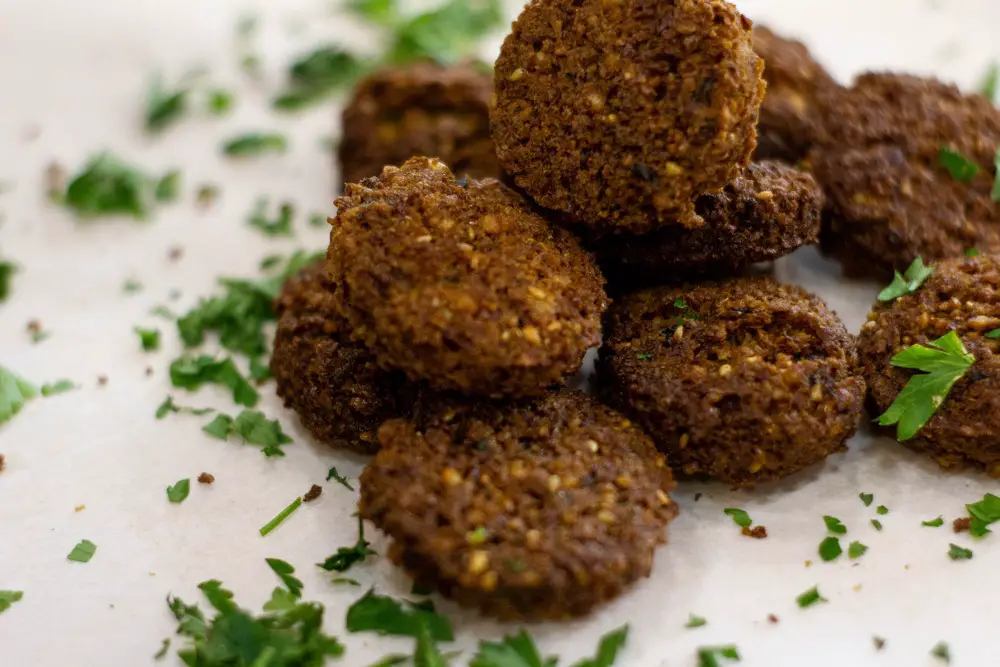
Protein and Fiber Content
Vegan falafel, made primarily from chickpeas, is an excellent source of both protein and fiber. A serving of 4 pieces (90 grams) typically contains:
- Protein: 12 grams
- Fiber: 5 grams
These values make falafel a suitable protein replacement for vegans concerned about meeting their protein and fiber requirements.
Healthy Fats
Chickpeas and falafel also contain healthy fats, particularly polyunsaturated and monounsaturated fats. These fats can help lower cholesterol levels and promote heart health. In a 90-gram serving of vegan falafel, you may find:
- Total Fat: 12 grams
- Monounsaturated Fat: 4 grams
- Polyunsaturated Fat: 2 grams
- Saturated Fat: 1.5 grams
It is important to note that the cooking method for falafel can impact the overall fat content. Baking, for instance, can decrease the total fat content compared to frying.
Vegan Alternatives and Additions
Vegan-Friendly Sauces
Various vegan-friendly sauces can be served with falafel. One of the most popular options is tahini, a sesame seed-based sauce that is both vegan and gluten-free. It has a rich, creamy texture and a nutty flavor that complements falafel perfectly. Another popular sauce is hummus, a chickpea-based spread that is also vegan and gluten-free. It can be prepared in various flavors, such as roasted red pepper or garlic, to add a variety of tastes to your falafel meal.
Toppings and Sides
To enhance your falafel experience further, add vegan-friendly toppings and sides to your meal. Some common options include:
- Fresh vegetables such as lettuce, tomato, cucumber, and onion
- Pickled vegetables, like turnips and pickles, provide a tangy contrast to the spiced falafel
- Olives, adding a briny and slightly bitter note to the dish
For a gluten-free option, consider serving falafel over a bed of greens or with a side of quinoa instead of pita bread.
Falafel Variations
Falafel can be prepared in several ways to cater to different dietary and taste preferences:
- Classic falafel: chickpea-based with spices like cumin, coriander, and parsley
- Lentil falafel: using lentils instead of chickpeas, providing a slightly different flavor and texture
- Green pea falafel: a lighter variation made with green peas and mint, giving a fresh, herbal twist
These variations and the many vegan-friendly sauces, toppings, and sides make falafel a versatile and inclusive meal option for vegans and those with gluten-free diets.
Authentic Vegan Falafel Recipe
Falafel is a popular Middle Eastern dish typically made from chickpeas and various spices. It is widely loved for its delicious taste and compatibility with various diets, including veganism. In this recipe, you will learn how to make authentic vegan falafel that is delicious and easy to prepare.
Ingredients
- 2 cups dried chickpeas, soaked overnight
- 1 small onion, chopped
- 1/2 cup fresh parsley, chopped
- 1/2 cup fresh cilantro, chopped
- 4 cloves garlic, minced
- 1 1/2 tsp salt
- 1/2 tsp black pepper
- 1/2 tsp cumin
- 1/2 tsp coriander
- 1/4 tsp baking soda
- Oil for frying (neutral-tasting like canola or grapeseed)
Preparation Instructions
- Begin by draining the soaked chickpeas thoroughly. Then, place them in a food processor with the onion, parsley, cilantro, garlic, salt, pepper, cumin, and coriander. Pulse the mixture until it forms a coarse paste. Be sure to scrape down the sides of the food processor to ensure all ingredients are well combined.
- Once the falafel mixture has reached the desired consistency, transfer it to a large mixing bowl. Stir in the baking soda, then cover the bowl with a clean towel or plastic wrap. Allow the mixture to rest for at least 30 minutes at room temperature.
- While the falafel mixture is resting, heat the oil in a deep frying pan or pot. The oil should ideally be 2-3 inches deep for optimal frying results.
- Once the oil is heated (350°F or 180°C), carefully shape the falafel mixture into small, round balls or patties. It is essential to keep your hands damp during this process to avoid the mixture from sticking to your hands.
- Carefully lower the falafel balls into the hot oil, ensuring not to overcrowd the pan. Fry the falafels for approximately 4-6 minutes or until golden brown and crispy outside. Watch the falafels; they can quickly burn if the oil temperature is too high.
- Remove the falafels from the oil using a slotted spoon and transfer them to a plate lined with paper towels to absorb the excess oil. Allow the falafels to cool slightly before serving.
Serve your homemade vegan falafels with pita bread, hummus, tahini sauce, or other desired accompaniments. You can create a healthy and satisfying meal in no time with this authentic vegan falafel recipe.
Finding Vegan Falafels in Restaurants
Vegan Restaurants
Finding vegan falafels in restaurants is easier than ever before. Many vegan restaurants offer falafels as a staple menu item. They are usually made from chickpeas, herbs, and spices, making them a delicious and nutritious option for vegans.
Middle Eastern Cuisine
Middle Eastern restaurants are the perfect place to find vegan falafels. They often have vegetarian and vegan options, making it a simple choice for those seeking plant-based meals. Falafels are typically served with sides such as hummus, tahini, and salad – which are also vegan-friendly.
Street Food
Falafel is a popular street food in many cities around the world. Street vendors and food trucks often have vegetarian and vegan options, including falafels. Just be sure to confirm that the falafel is made without animal products, such as eggs, to ensure it is completely vegan. Keep an eye out for local food markets and events that feature falafel vendors, as they often cater to dietary preferences like veganism.
Common Non-Vegan Ingredients in Falafel
Although falafel is generally considered a vegan dish, some recipes may include non-vegan ingredients. Being aware of these ingredients is important if you’re following a strict vegan diet. This section will discuss common non-vegan ingredients that might be used in falafel recipes.
One non-vegan ingredient that can be found in some falafel recipes is eggs. Eggs may be a binding agent to help hold the falafel balls together during cooking. While this isn’t a common practice in traditional Middle Eastern recipes, it can still be found in some variations:
- Eggs: As mentioned above, eggs may be a binding agent, particularly in recipes where the falafel mixture is very moist.
Another ingredient to watch for is dairy. Some falafel recipes might incorporate dairy products for added taste or texture. These may include:
- Yogurt: Sometimes, yogurt may be mixed into the falafel batter for a creamier texture.
- Cheese: Certain falafel recipes may include cheese, such as feta, as a filling or topping.
When shopping for pre-made falafel or eating out, you must check the ingredients list or ask about the recipe’s components to ensure it’s entirely vegan. Awareness of these potential non-vegan ingredients will help you make informed decisions about the falafel products and dishes you consume.
FAQs
Is falafel vegan?
Yes, falafel is generally considered vegan. It is made from chickpeas or fava beans, herbs, spices, and onions, which are all plant-based ingredients.
What are the main ingredients in falafel?
The main ingredients in falafel typically include:
- Chickpeas or fava beans
- Fresh herbs such as parsley and cilantro
- Spices like cumin, coriander, and paprika
- Onions
- Garlic
- Baking powder
- Salt
How is falafel cooked?
Falafel is traditionally deep-fried, which gives it a crispy exterior and soft, moist interior. However, some choose to bake or air fry falafel for a healthier option.
Are there any non-vegan ingredients to watch out for in store-bought or restaurant falafel?
While falafel is usually vegan, double-checking the ingredients or asking at a restaurant is always a good idea. Occasionally, some recipes may include dairy or egg as a binder. Additionally, be mindful of the sauces and condiments that may accompany falafel, as they could contain non-vegan ingredients.
Can falafel be gluten-free?
Yes, falafel can be gluten-free. Traditionally, falafel does not contain any wheat or gluten-containing ingredients. However, some recipes may use wheat flour as a binder. To ensure a gluten-free option, look for recipes that use chickpea flour or another gluten-free alternative.

